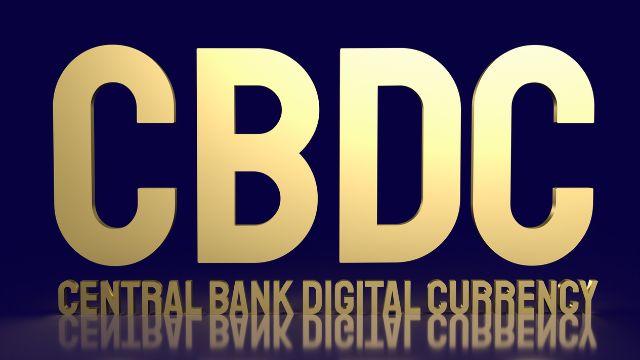Within the dynamic intersection of finance and technology, two pivotal and transformative concepts have risen to prominence – Central Bank Digital Currencies (CBDCs). Central Bank Digital Currencies (CBDCs) are digital representations of national fiat currencies issued and regulated by central banks, aiming to modernize payment systems and enhance financial inclusivity. On the other hand, you can visit https://bitiq.app/ it offers individuals a means to engage with cryptocurrency markets and explore new avenues of investment. Despite their digital foundations, these entities diverge significantly in their underlying principles and objectives, embodying distinct paradigms within the broader global financial landscape.
The Rise of CBDCs: A Paradigm Shift
CBDCs: An Overview
Central Bank Digital Currencies, or CBDCs, are digital forms of a country’s official currency, issued and regulated by the respective central bank. Unlike traditional cryptocurrencies, CBDCs are centralized and retain the backing and stability of a national government. These digital representations of fiat currencies aim to enhance the efficiency, security, and accessibility of financial transactions within a country’s borders.
Advantages of CBDCs
Financial Inclusion: CBDCs can bridge the gap between the banked and unbanked populations, providing individuals without access to traditional banking services a secure means of participating in the digital economy.
Monetary Policy Implementation: CBDCs enable central banks to execute monetary policies with greater precision, as transactions can be directly monitored and influenced in real-time.
Reduced Transaction Costs: With the elimination of intermediaries in CBDC transactions, costs associated with traditional financial services can be significantly reduced.
The Bitcoin Revolution: A Decentralized Dream
Bitcoin: An Overview
Bitcoin, the pioneer of decentralized cryptocurrencies, was introduced in 2009 as an alternative to traditional financial systems. It operates on a decentralized blockchain network, which means that transactions are verified by a network of participants rather than a central authority. Bitcoin’s finite supply and decentralized nature have led to its portrayal as “digital gold.”
Advantages of Bitcoin
Decentralization: Bitcoin operates without the control of any central authority, offering financial sovereignty to its users and shielding them from potential economic instability caused by traditional financial institutions.
Limited Supply: With a capped supply of 21 million coins, Bitcoin is designed to combat inflation and preserve value over time, contrasting with fiat currencies subject to central bank interventions.
Global Accessibility: Bitcoin transcends geographical boundaries, enabling individuals to send and receive funds internationally with relative ease, bypassing traditional banking systems and their associated delays.
The Clash of Ideals: CBDCs vs. Bitcoin
Philosophical Divide
At the core of the CBDC vs. Bitcoin debate lies a fundamental philosophical difference. CBDCs prioritize centralized control, aiming to leverage technology for more efficient governance of national economies. On the other hand, Bitcoin champions decentralization as a means to empower individuals and create a borderless financial system impervious to governmental control.
Privacy and Control
CBDCs provide governments with the tools to monitor financial transactions in real-time, potentially raising concerns about individual privacy and surveillance. Bitcoin, on the other hand, offers a pseudonymous transaction system, giving users a certain degree of anonymity in their financial dealings.
Monetary Policy and Inflation
While CBDCs offer central banks enhanced tools for implementing monetary policy, their centralized nature may lead to a more significant risk of inflation due to direct control. Bitcoin’s predetermined issuance schedule and decentralized nature counteract this risk, attracting those wary of traditional monetary policy.
Coexistence or Competition: Finding Common Ground
Potential Synergies
CBDCs and Bitcoin, despite their ideological differences, could coexist and even complement each other in the evolving financial landscape. CBDCs could facilitate the integration of traditional financial systems with blockchain technology, enhancing efficiency without sacrificing control. Bitcoin, meanwhile, remains a store of value and a decentralized means of cross-border exchange.
Regulation and Adaptation
The challenge lies in striking a balance between regulation and innovation. Governments must adapt to the changing financial landscape while ensuring consumer protection, economic stability, and fair competition. Regulatory frameworks that acknowledge the unique strengths of both CBDCs and Bitcoin could foster healthy coexistence.
Conclusion: Navigating the Future
Within the clash of ideals delineating Central Bank Digital Currencies (CBDCs) and Bitcoin, each concept stands as a distinct and influential force in the reconfiguration of the global financial terrain. CBDCs epitomize efficiency, regulatory oversight, and expanded financial access, envisioning a future where transactions are streamlined and underserved populations gain broader economic participation. In contrast, Bitcoin staunchly advocates for decentralization, a finite supply safeguarded by cryptographic principles, and the empowerment of individuals by providing them greater control over their financial endeavors. As technological progress persists, the convergence of these disparate visions holds the promise of a symbiotic transformation, wherein the amalgamation of strengths could usher in a harmonized evolution of the financial ecosystem, driven by both innovation and inclusivity.















